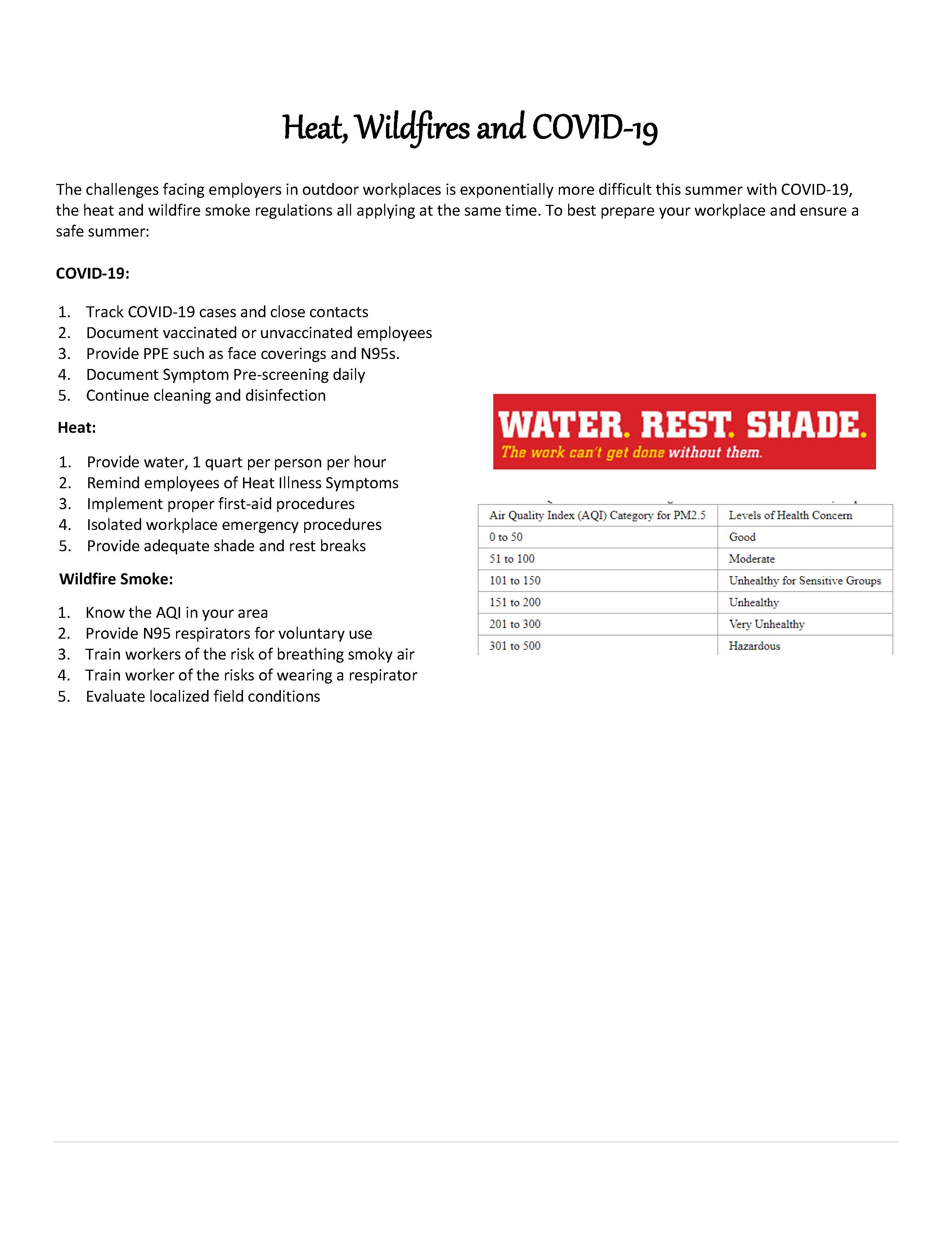We have witnessed a rise in Cal/OSHA consultation visits and surprise enforcement inspections this year. Typically, these visits include an analysis of programs such as your Injury & Illness Prevention Program, Heat Illness Program, Training Program, and a walk-through inspection of your worksite.
To stay safe and be prepared, ensure your company safety programs are being implemented and are effective. This means your programs are current and up to date, employees are experienced in the job being performed and employees have effective training in matters respective to their particular job assignments.
Your programs such as your IIPP and Heat Illness Program are required to be updated and reviewed annually at a minimum or whenever new substances, processes, procedures, or equipment are introduced to the workplace and represent a new hazard. These programs must be readily available for employees to access.
If Cal/OSHA Shows up:
SAFETY COACHING UPDATE SUBMITTED BY BEN W. LAVERTY, III, Ph.D., CSP, FACFE, REPA
1.Opening Conference: Issues to be reviewed.
- a. Have IIPP available
- b. Have training records available
- c. Have disciplinary notice(s) available
- d. Have 5 years of OSHA 300 Logs with current year included
- e. Have 5 years of OSHA 300A Logs with current year included
2. Escort Cal/OSHA person to incident scene using route least likely to offer the Cal/OSHA person a view of other operations.
3. Be truthful and brief when answering questions.
4. Do not share opinions on: injured individuals, (verbal or mutual), training programs, competency or supervisory personnel at time of inspection (get all available evidence first).
5. Make copies of or note any statements made by Cal/OSHA inspector.
6. If inspector takes a picture, a mirror image of that picture MUST BE taken by company personnel, developed, documented and put into the investigation file.
7. Never argue with a Cal/OSHA representative.
8. Do not ask if there will be a citation.
9. Do not say that you think a citation should be written even if at the time you may think one is deserved. (Yet to be discovered evidence could change your mind…you will have difficulty in taking the statement back).
10. Be on the alert for verbal entrapment. The inspector will often:
- a. Ask, ask, ask – is the answer the same each time?
- b. Implying “another” usually higher-ranking individual, said the facts were different.
- c. Let Cal/OSHA expert draw and report on any preliminary conclusion, not you.
- d. Don’t get hooked with “what do you think.” Answer with, “I’m holding off on making conclusions until I have all the information.”
11.Closing Conference: Listen and take notes.

 Outdoor Workplace Challenges
Outdoor Workplace Challenges